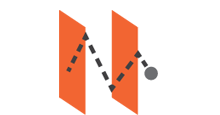Style Guide
Content must resonate with your audience if you are to make a connection.
This is equally the case for a few lines of text on your Home page as it is for a weighty Publication.
It becomes vital when you add keywords into the mix. Written badly, search engine 'optimised' text can make you sound like a robot.
If you had to tell somebody about your business, what would you tell them (stance) and how would you say it (tone)?
Tone of Voice
- Tone of voice isn’t what you say but how you say it.
- It reflects your character and personality.
- It is to writing what graphic design is to branding.
- You can't create effective content without language ..
- ..which must be infused with a tone that is clear, consistent and relevant.
- It allows you to set yourself apart from the rest.
- It influences how people feel about you.
Editorial Stance
- Your "stance" is the values and styles imbued within your content.
- Think part your world view, and part your style.
- It's a choice, and a way of distinguishing you from your competitors.
- The use (or non-use) of jargon is one such choice = simplify.
- As is reflecting the values and social views of prospects ..
- ... or appealing to a demographic group.
- It communicates an opinion and a perspective.
Humour, sentence construction and punctuation are style choices. As is coming across as strident and authoritative.....or chatty, colloquial and friendly.
Planning
- Do you want to tell and sell or teach and help?
- Do your convey information as facts or as stories?
- Is your style formal, 3rd person or informal, 1st person?
- Thinking of your content, How does your company 'sound' to others?
- Is your tone and stance consistent at all touchpoints?
- Only when stance, tone and brand aligns are you authentic.
- Only when you are authentic are you credible.
Ready to consider the 3 P's? (Planning, Process and Pitfalls). It's time to start your plan:








 Share
Share 